|
|
||||||||||||||||||||||||||||||||||||||||||||||||||||||||||||||||||||||||||||||||||||||||||||||||||||
|
|
|
|
|||||||||||||||||||||||||||||||||||||||||||||||||||||||||||||||||||||||||||||||||||||||||||||||||
|
|
||||||||||||||||||||||||||||||||||||||||||||||||||||||||||||||||||||||||||||||||||||||||||||||||||||
|
|
|
|
||||||||||||||||||||||||||||||||||||||||||||||||||||||||||||||||||||||||||||||||||||||||||||||||||
|
|
• Transit
time • Container specification • Main ports guide • Docs ( Inbound cargo) • Pallet available for LCL
|
•24hour quotes, charts • Inquiry on-line • Price on-line (access with password) • Order tracking on-line |
||||||||||||||||||||||||||||||||||||||||||||||||||||||||||||||||||||||||||||||||||||||||||||||||||
|
|
||||||||||||||||||||||||||||||||||||||||||||||||||||||||||||||||||||||||||||||||||||||||||||||||||||
|
|
|
|||||||||||||||||||||||||||||||||||||||||||||||||||||||||||||||||||||||||||||||||||||||||||||||||||
|
• Plastcology-how
to choose your plastic jars
|
•Tin Specification |
||||||||||||||||||||||||||||||||||||||||||||||||||||||||||||||||||||||||||||||||||||||||||||||||||
|
|
||||||||||||||||||||||||||||||||||||||||||||||||||||||||||||||||||||||||||||||||||||||||||||||||||||
|
|
||||||||||||||||||||||||||||||||||||||||||||||||||||||||||||||||||||||||||||||||||||||||||||||||||||
|
Shijiazhuang
city is the captial of Hebei Province,China with a polulation of eight million. |
||||||||||||||||||||||||||||||||||||||||||||||||||||||||||||||||||||||||||||||||||||||||||||||||||||
Plasticology: Learn more about styles, types, materials, and terms
There are 7 major plastic types: PET HDPE PVC LDPE PP PS Please see our glossary for additional definitions. Below we provide a basic comparison of each plastic type as well as definitions and common uses. This information is generalized. Each product packaged in plastic will have a slightly different reaction to the plastic. You are responsible for testing your product with your packaging. We offer samples for you to test your product with and therefore will not be accountable for any product-to-plastic incompatibilities.
Polyethylene terephthalate (PET)
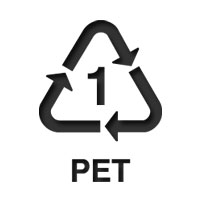 PET or PETE (or the obsolete PETP or PET-P) is of the polyester family and is used in beverage, food and other liquid containers. PET can be semi-rigid to rigid and is very lightweight. It acts as a good barrier to alcohol and solvents (alcoholic beverages may require a specially treated PET resin depending on the shelf-life requirements). It is strong, impact-resistant, and naturally colorless and transparent. Common uses: soft drink bottles, cooking oil bottles, peanut butter jars,products containing essential oils, some fruit juices, alcohol beverage bottles, space blankets NOTE: Avoid using PET containers to store products that contain essential oils greater than 5% or fragrance oils greater than 15%. If your oil percentages exceed these respective levels, please consider using glass.
This information has been provided as a guide. Please remember, it is your responsibility to test your product's compatibility
High-density polyethelene (HDPE)
 HDPE is made from petroleum. HDPE has a stronger intermolecular force and tensile strength than low density polyethylene (LDPE). It is also harder and more opaque and can withstand somewhat higher temperatures: 190 <F (120 <C) for short periods, 160 <F (110 <C) continuously. Common uses: milk jugs, distilled water, large vinegar bottles, grocery bags, liquid laundry and dish detergent, fabric softener, motor oil, antifreeze, bleach and lotion
This information has been provided as a guide. Please remember, it is your responsibility to test your product's compatibility with CPS packaging.
Polyvinyl chloride (PVC)
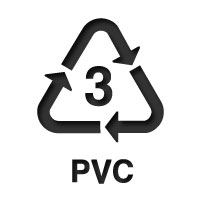 Nearly 57% of PVC is chlorine, requiring less petroleum than other plastics. PVC is biologically and chemically resistant. It is the third most widely used plastic after PET and PP. PVC is ideal for storing shampoos, oils, and other chemicals. PVC plastic bottles are durable for long periods of time and can withtand various environmental demands. Common uses: chemical spray bottles, pipes, electrical wire insulation, clothing, bags, upholstery, tubing, flooring, waterbeds, pool toys, bottles
This information has been provided as a guide.
Low-density polyethelene (LDPE)
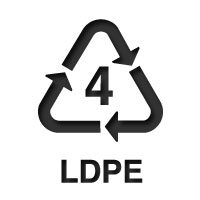 LDPE is made from petroleum. Its tensile strength and density is lower, but its resilience is higher than high-density polyethylene (HDPE). It can withstand temperatures of 175<F (80 <C) continuously and 203 <F (95 <C) for a short time. It can be translucent or opaque, is flexible, tough, and almost unbreakable. Common uses: dry-cleaning bags, produce bags, trash can liners, food storage containers, bread bags, squeezable containers, six pack soda can rings, food storage
This information has been provided as a guide. Please remember, it is your responsibility to test your product's compatibility with LT packaging.
Polypropylene (PP)
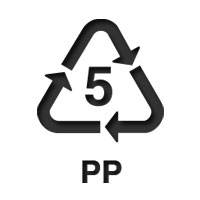 PP is often used for food packaging. It's not as tough as HDPE, but it is less brittle. PP is less flexible than LDPE, somewhat stiffer than other plastics, reasonably economical, and can be translucent, opaque, or of any color. PP has very good resistance to fatigue. PP has a melting point of 320 <F (160 <C). Food containers will not melt in the dishwasher nor during industrial hot filling processes. Common uses: bottle caps, drinking straws, hinged containers, battery cases, dairy tubs (e.g. sour cream, cottage cheese), cereal box liners
This information has been provided as a guide. Please remember, it
is your responsibility to test your product's compatibility with
LT packaging. View all PP products at CPS »
Polystyrene (PS)
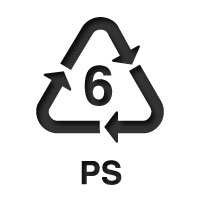 PS is made from petroleum. Pure solid polystyrene is a colorless, hard plastic with limited flexibility. It can be cast into molds with fine detail. Polystyrene can be transparent or can be made to take on various colors. Common uses: bottle caps, drinking straws, yogurt cups, clear carryout containers, vitamin bottles, fast food, spoons, knives and forks, hot cups, meat and produce trays, egg cartons, clamshell carryout food containers
This information has been provided as a guide. Please remember, it
is your responsibility to test your product's compatibility with
LT packaging.
Other
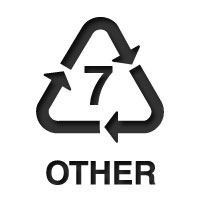 This is the catch all category of all other plastics. Many biodegradable, photo-sensitive, and plant-based plastics fit in this category. Basically any plastic that is not HDPE, LDPE, PET, PVC, PS or PP are put into this category. Additionally, any plastic resin type that has been developed since the original 6 resin types were established in 1988, are marked with the 7 or Other resin identification code. As such, listing common uses for these kinds of plastics is nearly impossible since their applications and characteristics are so diverse. This information has been provided as a guide. Please remember, it is your responsibility to test your product's compatibility with LT packaging. |
||||||||||||||||||||||||||||||||||||||||||||||||||||||||||||||||||||||||||||||||||||||||||||||||||||
|
|
||||||||||||||||||||||||||||||||||||||||||||||||||||||||||||||||||||||||||||||||||||||||||||||||||||
|
Copyright 2001 - All Rights
Reserved
|
Contact Us |
Legal Notice
| |
||||||||||||||||||||||||||||||||||||||||||||||||||||||||||||||||||||||||||||||||||||||||||||||||||||









